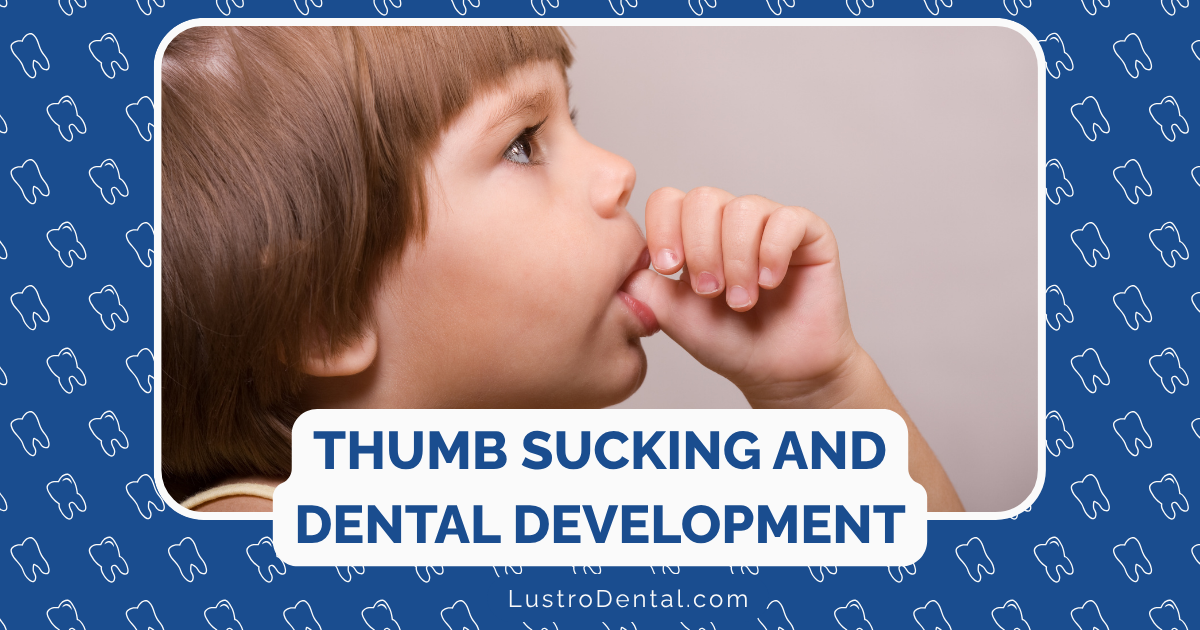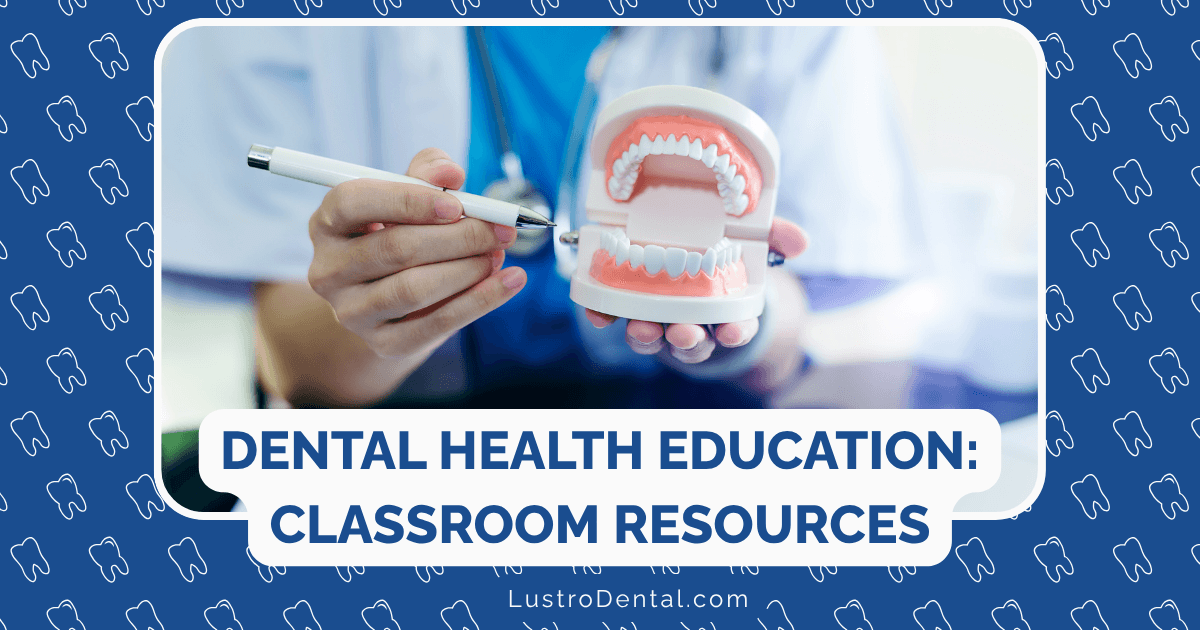The Dental Impact of Prolonged Thumb Sucking: When to Intervene

Thumb sucking is one of the most natural and common habits in early childhood. It begins even before birth, with ultrasound images often capturing fetuses sucking their thumbs in the womb. After birth, this instinctive behavior provides comfort, security, and a way for babies to self-soothe.
But what starts as a perfectly normal developmental behavior can sometimes persist longer than ideal. As a parent, you may wonder: When does this harmless habit become potentially harmful to your child’s dental development? When should you intervene, and how?
This comprehensive guide explores the dental impacts of prolonged thumb sucking, helps you identify when it’s time to take action, and provides evidence-based strategies to help your child break the habit gently and effectively.
Understanding the Thumb-Sucking Timeline
Before discussing potential problems, it’s important to understand the typical timeline of thumb sucking:
- Infancy (0-1 year): Completely normal and beneficial for self-soothing
- Toddlerhood (1-3 years): Still considered normal, often used for comfort during stress or sleepiness
- Preschool (3-5 years): Many children naturally stop on their own; continued thumb sucking warrants monitoring
- School-age (5+ years): Potential for dental issues increases significantly; intervention is typically recommended
Dr. Sarah Johnson, pediatric dentist at Children’s Dental Health, explains: “About 70-90% of children engage in non-nutritive sucking behaviors like thumb sucking. Most children naturally outgrow the habit between ages 2 and 4 as they develop other coping mechanisms and become more socially aware.”
How Thumb Sucking Affects Dental Development
The impact of thumb sucking on dental development depends on several factors:
- Duration: How long the habit persists
- Frequency: How often the child sucks their thumb
- Intensity: Whether the sucking is passive (resting the thumb in the mouth) or active (with strong sucking pressure)
- Positioning: How the thumb is positioned in the mouth
Potential Dental Problems from Prolonged Thumb Sucking
1. Misalignment of Teeth (Malocclusion)
The most common dental issue associated with thumb sucking is misalignment of teeth, which can manifest in several ways:
- Anterior Open Bite: Front teeth don’t meet when biting down, creating a gap between upper and lower teeth
- Overbite (Overjet): Upper front teeth protrude outward
- Crossbite: Upper teeth fit inside the lower teeth, potentially causing jaw asymmetry
“The pressure from thumb sucking can be surprisingly strong,” notes Dr. Michael Chen of Lewisville Kids Dentistry. “Over time, this constant force pushes teeth out of their natural positions, similar to how orthodontic appliances move teeth—except in undesirable directions.”
2. Changes to Palate Structure
Beyond affecting tooth position, prolonged thumb sucking can actually alter the shape of the oral structures:
- Narrowing of the upper jaw: The constant pressure can cause the palate to become high and narrow
- Changes to palatal arch: The roof of the mouth may develop abnormally
- Altered growth patterns: Overall facial development may be affected
3. Speech Development Issues
The dental changes caused by thumb sucking can create challenges with speech development:
- Lisping: Particularly with “s” and “z” sounds
- Articulation difficulties: Problems pronouncing certain consonants
- Thrusting of the tongue: Improper tongue positioning during speech
4. Additional Oral Health Concerns
Other potential issues include:
- Calluses or skin irritation on the thumb
- Increased risk of oral infections due to introducing bacteria from the hands
- Potential delay in permanent tooth eruption
- Jaw muscle imbalances from repetitive motion
When to Be Concerned: Age-Based Guidelines
While every child develops at their own pace, these general guidelines can help you determine when thumb sucking might be problematic:
Ages 0-3: Generally No Concern
During these early years, thumb sucking is a normal part of development. The American Academy of Pediatrics and the American Dental Association agree that there’s usually no need for intervention at this stage unless you notice obvious dental changes.
What to do: Simply monitor the habit and focus on establishing good oral hygiene routines.
Ages 4-5: Increased Monitoring
By age 4, many children naturally outgrow thumb sucking. If the habit persists, it’s time to pay closer attention.
What to do: Discuss the habit with your child’s dentist during regular check-ups. They can monitor for early signs of dental changes and provide guidance specific to your child.
Ages 6 and Beyond: Intervention Recommended
Once permanent teeth begin to erupt (typically around age 6), the risk of lasting dental problems increases significantly. A 2024 study published in BMC Oral Health found that children aged 6-14 with persistent thumb sucking had higher rates of anterior open bite and other malocclusions.
What to do: Active intervention is typically recommended at this stage to prevent long-term dental issues.
Warning Signs That Thumb Sucking Is Affecting Dental Health
Regardless of age, watch for these indicators that thumb sucking may be causing dental problems:
- Visible changes in teeth alignment, particularly front teeth that protrude or don’t meet when biting
- Calluses, redness, or skin changes on the thumb
- Speech difficulties, especially with “s,” “z,” “d,” and “t” sounds
- Difficulty closing the mouth completely or lips that remain parted at rest
- Complaints of teasing from peers about the habit
- Thumb sucking that occurs with intensity (audible sucking sounds, cheek movement, or visible effort)
Dr. Emily Rodriguez, orthodontist at Schwimmer Dental, advises: “If you notice any of these warning signs, it’s worth consulting with a pediatric dentist or orthodontist, even if your child is younger than 5. Early intervention can prevent more complex issues from developing.”
Effective Intervention Strategies by Age Group
Helping a child stop thumb sucking requires patience, understanding, and age-appropriate approaches:
For Preschoolers (Ages 3-5)
At this age, gentle encouragement and positive reinforcement work best:
- Identify triggers: Notice when your child is most likely to suck their thumb (when tired, anxious, bored, etc.)
- Positive reinforcement: Create a reward system for thumb-free periods, such as sticker charts or small prizes
- Gentle reminders: Establish a private signal to remind your child when they’re sucking their thumb
- Distraction techniques: Offer alternative comfort items like a special stuffed animal or blanket
- Read children’s books about stopping thumb sucking, such as “David Decides About Thumbsucking” or “Thumb Love”
Pro tip: “Never shame or punish a child for thumb sucking,” cautions child psychologist Dr. Lisa Patel. “This can increase anxiety, which may actually intensify the habit and create negative associations with dental care.”
For School-Age Children (Ages 6-9)
Children in this age range can better understand the “why” behind stopping the habit:
- Educational approach: Explain in simple terms how thumb sucking affects teeth, perhaps using visual aids
- Involvement in the solution: Ask your child for ideas on how to stop and implement their suggestions when possible
- Habit awareness: Help them become conscious of when they suck their thumb by keeping a simple log together
- Physical reminders: Consider a non-punitive physical reminder like a colorful adhesive bandage or a special thumb ring during high-risk times
- Substitute behaviors: Teach replacement habits for stress management, such as deep breathing or squeezing a stress ball
Pro tip: “Make your child a partner in the process,” suggests Dr. Johnson. “When children feel ownership over the goal, they’re more motivated to succeed.”
For Older Children (Ages 10+)
Older children who continue thumb sucking often do so unconsciously, particularly during sleep:
- Honest conversation: Discuss social implications and long-term dental concerns in an age-appropriate, non-judgmental way
- Nighttime strategies: Consider a thumb guard, glove, or sock over the hand during sleep
- Orthodontic consultation: Discuss whether a dental appliance might be appropriate
- Behavioral therapy: For persistent habits, cognitive behavioral techniques may be helpful
- Address underlying anxiety: If thumb sucking seems linked to significant stress or anxiety, consider consulting a child psychologist
Professional Intervention Options
When home-based strategies aren’t sufficient, dental professionals can offer additional help:
1. Dental Appliances
Several dental devices can help discourage thumb sucking:
- Palatal Cribs: Fixed devices that create a physical barrier behind the front teeth, making thumb sucking uncomfortable or impossible
- Thumb Guards: Removable devices worn on the thumb that interrupt the sensory satisfaction of sucking
- Habit Reminder Appliances: Devices that don’t prevent thumb access but provide a reminder when the thumb enters the mouth
A 2025 study in BMC Oral Health compared the effectiveness of an electronic habit reminder (a special wristwatch that alarms when thumb sucking occurs) with traditional palatal cribs. While the palatal crib showed a higher cessation rate (54.5% versus 27.3%), both approaches helped some children break the habit.
2. Bitter-Tasting Applications
Commercially available products with bitter but safe flavors can be applied to the thumb to discourage sucking:
- These should only be used with a child’s knowledge and consent
- They work best when combined with positive reinforcement
- They should be considered a temporary aid, not a standalone solution
3. Orthodontic Correction
For children who have already developed dental issues from thumb sucking:
- Braces may be needed to correct misalignments
- Palatal expanders can address narrowing of the upper jaw
- Clear aligners might be options for older children with minor misalignments
Dr. James Wilson, orthodontist at AlignerCo, notes: “The good news is that when thumb sucking stops, some dental issues may partially self-correct, especially in younger children. However, significant malocclusions typically require orthodontic intervention.”
Supporting Your Child Through the Process
Regardless of which intervention strategies you choose, these principles will help make the experience positive:
Focus on Encouragement, Not Criticism
- Celebrate successes rather than pointing out failures
- Acknowledge that breaking any habit is difficult
- Remind your child that many people need help breaking habits
Address Underlying Needs
- Ensure your child has other ways to self-soothe when stressed
- Provide extra comfort and attention during the transition
- Consider whether anxiety or other emotional needs should be addressed
Be Patient and Consistent
- Expect setbacks and handle them matter-of-factly
- Maintain a consistent approach among all caregivers
- Recognize that habit cessation takes time—often weeks or months
When to Seek Additional Help
Consider consulting specialists if:
- Your child shows signs of significant anxiety or emotional distress related to thumb sucking
- The habit persists despite multiple intervention attempts
- Dental problems are becoming severe or affecting daily function
- Your child is experiencing social difficulties or bullying because of the habit
Long-Term Outlook: What Parents Should Know
Parents often worry about the long-term implications of thumb sucking. Here’s what research tells us:
- Most dental effects are reversible if the habit stops before permanent teeth are fully established
- Early intervention generally leads to better outcomes with less need for extensive orthodontic treatment
- Some children may substitute other habits temporarily as they stop thumb sucking
- The psychological approach matters: Children who stop through positive methods typically have better outcomes than those who experience shame or punishment
Conclusion: Balancing Concern with Compassion
Thumb sucking is a natural behavior that provides important comfort to young children. While prolonged thumb sucking can indeed impact dental development, approaching the issue with understanding rather than alarm creates the best environment for successful habit cessation.
By knowing when to intervene, choosing age-appropriate strategies, and maintaining a positive, supportive attitude, you can help your child move beyond thumb sucking while preserving their sense of security and self-confidence.
Remember that each child’s journey is unique. What works for one child may not work for another, and the timeline for success varies widely. With patience and the right approach, most children can successfully stop thumb sucking before significant dental issues develop.
Has your child struggled with thumb sucking? What approaches worked for your family? Share your experiences in the comments below!







